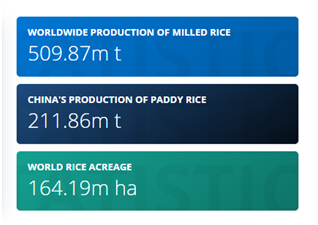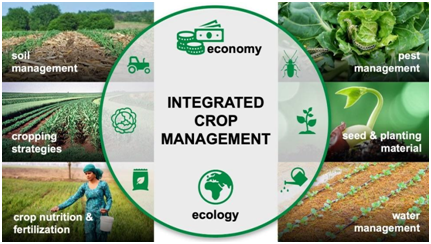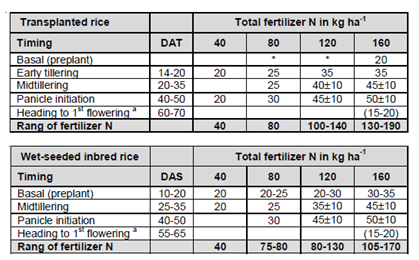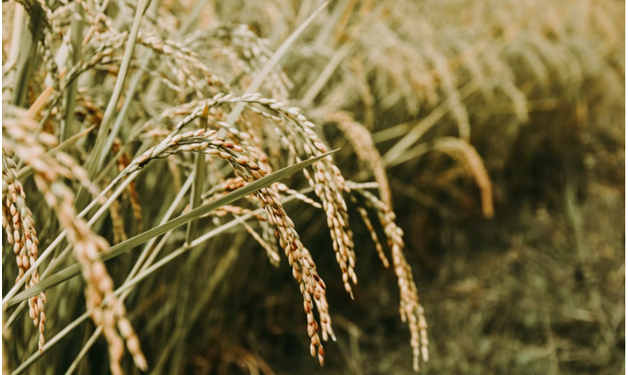Rice farming is a challenging task that requires skill, time, money, and effort. However, gathering actionable information can help you attain more skills and in less time and get better output with less investment.
If you are unhappy with the yield of your rice crops or just getting started in the rice production industry, this article has some practical and actionable tips for you.
1. Choose the right land

Source: statista.com
You can grow rice on all types of land. However, centuries of rice production show that rice crops do better in swampy lands.
You have to find the land for rice farming where you have adequate access to freshwater to cut down your irrigation costs.
It is therefore suggested by experts to find an ecological zone that’s perfect for rice crops. The land you choose must be fertile and have a good water retention capacity.
2. Adequate soil
Good soil provides a better yield and doesn’t need excessive irrigation. The soil texture determines the water retention capacity of a rice field. Get help from an expert if you find it hard to pick the right soil type for your farm.
3. Preparing the land
The soil and the farm must be in the best condition to ensure the maximum yield of your crop. Preparation of the land doesn’t take long if you follow the right practices.
Follow these tips to prepare your farming land:
- Start by weeding the farm.
- Level the ground carefully.
- Do digging/tilling on the farm.
- Mix the soil properly.
You can prepare your land in any climate or weather condition. Ensure that the land is ready for the season in which you will plant seeds.
4. The proper planting time
The yield of your rice crop is linked directly to the time you plant the seeds. The type of seed planting you choose depends on the time you select for the plantation.
For example, if you choose rice transplantation instead of direct seeding, you must keep planting time in mind.
You should seed the plants in moist soil to get the best results. Most experts recommend cultivating a rice crop in May because of the expected rainfall, but the ideal time may vary depending on your area.
5. Choosing and preparing seeds
As per the Rice Seed Production Manual published by NERICA, the yield of your rice crop can grow from between 5-20% if you choose the right seeds.
Keeping the seeds safe from unwanted guests is also important.
For example, birds damage rice fields by eating the seeds before germination. You have to stay prepared for all these unwanted guests who can damage your rice field.
6. Management of your farm

Source: cabi.org
Pests can be handled properly on your rice farmwatchdoguganda.com if you follow the right farm management tips. Not following proper tips can result in decreased yield or destruction of your crop in severe cases.
Build a team of skilled people and divide crop management responsibilities among them.
You must know when to use chemicals or other techniques to get rid of pests or weeds. Only trust reliable information regarding rice farm pests, so you don’t have to face additional issues.
7. Weed your farm
Weeds can invade your rice fields if you take any precautionary measures. The presence of weeds can steal the necessary nutrients from your crop.
Therefore, it is essential to get rid of weeds as soon as you can. After the germination of the rice seeds, it’s recommended to do the first weeding session between 15 to 21 days. The second weeding can take place one month after the first weeding.
8. Pick the right fertilizers

Source: knowledgebank.irri.org
An important part of rice farm management is using proper fertilizers. Good fertilizers can keep the soil prepared for rice production and ensure that your crop doesn’t deprive of necessary nutrients, resulting in an improved yield of your rice crop.
Nitrogenous, phosphorus, and potash fertilizers are recommended the most for rice crops. To get the desired results, you have to know how and when to administer these fertilizers in your fields.
9. Scout the fields regularly
How do you come to know about the problems in your rice field? Relying on tech products is important for proper rice crop management, but the good-old scouting of your field can never be ignored.
Scouting allows you to identify and fix the problems on time.
For example, with a proper scouting routine, you can ensure the quality of soil and can identify weed growth in your rice fields. Follow the basics of scouting so you can scout the fields yourself properly.
10. The harvesting process
One of the main reasons farmers love to grow a rice crop worldwide is that it doesn’t take long before the crop is mature and ready for harvesting.
In simple terms, rice harvesting picks the mature crop and makes it ready for sales.
Some proven tips can make it easier to harvest your crop. For example, you should not drain your field dry before harvesting your crop.
You can opt for manual or mechanical rice harvesting in your field. The former method takes a long time, and the latter is not cost-effective and depends on the presence of proper harvesting tools. Pick the method that suits you most according to your specific crop.
11. Dry the crop
The presence of extra moisture in rice grains can make the crop unsafe for storage. After harvesting your rice, the most important thing to take care of is drying the rice crop.
The absence of the drying process can reduce the quality of rice grains and cause total wastage of the crop in severe cases.
Put the harvested crop under sunlight to let the grains dry properly. Make sure you supervise the drying process to avoid any problems.
12. Milling and storage phase
Milling involves removing the husk and bran layers to make rice grains edible. The rice crop milling process starts after the crop’s drying. The milling machines have made it easier to smoothly carry out the milling process.
The rice crop gets ready at the end of the milling process. Rice storage is the final store to keep the crop ready for customers.
The storage process involves protecting the grains from sneaky pests and microorganisms. Wood pallets, containers, and storage rooms are commonly used to store rice crops.
Conclusion
Follow all the tips mentioned above and don’t forget to get guidelines from a skilled rice farming consultant about your specific farming land. Happy farming!
Do you have a story in your community or an opinion to share with us: Email us at editorial@watchdoguganda.com













